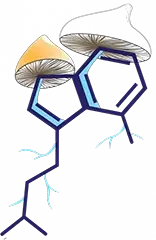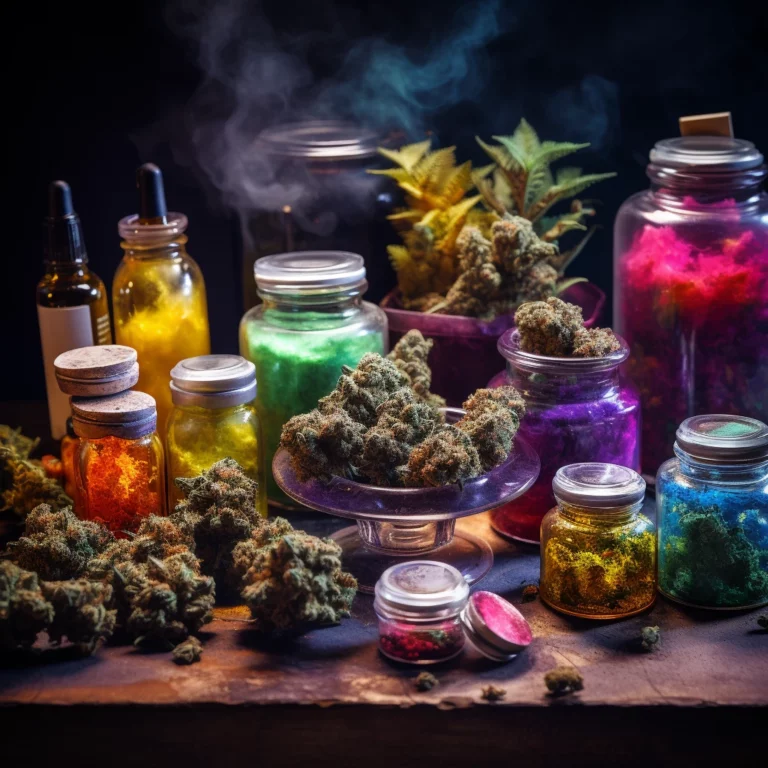The annals of psychedelic research brim with fascinating tales, none perhaps more potent or transformational than the story of lysergic acid diethylamide (LSD). The chemical baby of Albert Hofmann, a Swiss chemist, LSD is often referred to by its father as his “problem child.” The discovery of this psychedelic, as we shall soon discover, was as much an accident as a product of Hofmann’s diligent chemical explorations. The subsequent impact on science and culture reverberates even today, underscoring the latent power in this peculiar, transformative compound.
Albert Hofmann: The Scientist
Albert Hofmann’s professional journey began at Sandoz Laboratories in Basel, Switzerland, in the year 1929. A man of curiosity and dedication, he busied himself in the study of medicinal plants and the myriad chemical compounds they held within. The unassuming ergot fungus caught Hofmann’s eye, largely due to the variety of alkaloids it produced. His research led him to the heart of these alkaloids: lysergic acid, a compound with unknown but immense potential.
The Accidental Discovery
In the annals of scientific discovery, few tales are more intriguing than the genesis of LSD-25. Hofmann first synthesized it in 1938, though the true potential of this compound remained unbeknownst to him. On an extraordinary day in April 1943, Hofmann inadvertently experienced the profound effects of LSD-25 as it was accidentally absorbed through his skin. The world was about to witness its first LSD trip, a revelation that would forever change our understanding of the human mind.
Hofmann’s Encounter with the “Problem Child”
Despite LSD’s unrivaled potency, the initial reactions at Sandoz Laboratories were tepid at best. LSD was seen more as a chemical curiosity than a commercial product. However, Hofmann’s steadfast belief in his ‘problem child’ was unswayed. In 1947, he dove back into the world of LSD. His explorations not only confirmed LSD’s profound effects but also laid the groundwork for the future of psychedelic research.
Scientific Exploration and Medical Applications
The significance of LSD didn’t go unnoticed at Sandoz Laboratories for long. By the 1950s, the company had begun promoting LSD as a psychiatric tool, distributing it to researchers and clinicians worldwide. Early work by Humphry Osmond and Abram Hoffer delved into the therapeutic potentials of LSD. Their studies hinted at the promise of LSD-assisted psychotherapy for alcoholism, anxiety, and a range of other psychiatric disorders.
LSD’s Impact on Culture and Counterculture
The journey of LSD wasn’t confined within the sterile walls of laboratories. Timothy Leary, a psychologist at Harvard University, saw potential beyond the medical. His Harvard Psilocybin Project used LSD and other psychedelics to explore consciousness and spiritual experiences. LSD soon seeped into the fabric of the counterculture movement of the 1960s, becoming a symbol of rebellion and a conduit for artists, musicians, and writers to explore the limits of their consciousness.
Hofmann’s Reflections and Legacy
Through all the tumult and the triumphs, Hofmann never ceased his study of LSD. His writings are considered seminal in our understanding of consciousness, spirituality, and the potential of psychedelics. The impact of his discovery is palpable in the current resurgence of interest in psychedelic research and therapy. His work has been a torch for the new generation, inspiring a responsible and intentional use of psychedelics.
Conclusion
Albert Hofmann’s serendipitous discovery and subsequent exploration of LSD have touched and transformed many aspects of science, culture, and society. The profound potential of psychedelics, as evidenced by LSD, has paved the way for significant advancements in the field. The discovery of LSD precipitated a revolution in our understanding of consciousness, spurred the birth of the counterculture, and continues to inspire artistic and scientific exploration.
The ongoing research on LSD and other psychedelics highlights the importance of these substances for their potential therapeutic applications and the accompanying ethical considerations. A comprehension of LSD’s history and the invaluable contributions of individuals like Albert Hofmann can guide us responsibly into the future of psychedelic research. As we look ahead, we can only hope to harness the transformative power of these substances for the benefit of humankind.
[gap height=”130px”]
[ux_image id=”8401″]
[gap height=”130px”]
We hope that you have gained a little more understanding and wisdom after reading through our article about LSD. We hope that it has inspired you to explore the multitude of possibilities through LSD.
Shroomhub is your trusted online source in Canada for all things Psychedelic, from Magic Mushrooms, LSD and even DMT, take advantage of our weekly deals and bargain prices you wont find anywhere else!
[gap height=”130px”]
[message_box]
[row v_align=”middle” h_align=”center”]
[col span=”9″ span__sm=”12″]
Author
Freelance Writer
Leo Thomas
[/col]
[col span=”2″ span__sm=”12″ align=”center”]
[button text=”Linkedin” color=”white” style=”outline” radius=”99″ link=”https://www.linkedin.com/in/leo-thomas-24b827279/”]
[/col]
[/row]
[/message_box]

